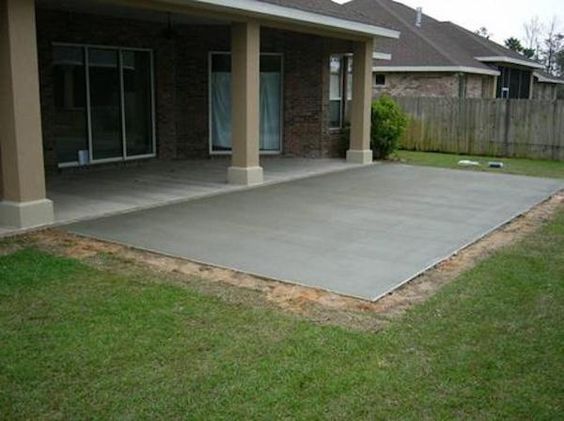A concrete driveway typically lasts between 25 to 30 years if you maintain it properly and guarantee quality installation. Key factors like climate, installation quality, and proper curing greatly influence its longevity. Freeze-thaw cycles can shorten lifespan, while using high-quality concrete mix, a well-prepared base, and steel reinforcement can extend it. Regular maintenance, such as sealing every 2-3 years and promptly fixing small cracks, keeps it in good shape. Paying attention to these details can help you maximize your driveway’s life. There’s more to learn about how to secure it lasts as long as possible.
Average Lifespan of Concrete Driveways
A well-maintained concrete driveway Cincinnati, OH typically lasts around 25 to 30 years. To achieve this longevity, you need to focus on proper installation techniques and understand the impact of climate.
Starting with the installation, make sure that the concrete mix is of high quality and the base is well-prepared. The base should be compacted and leveled to prevent uneven settling, which can lead to cracks and other issues.
Pay attention to the thickness of the concrete slab, usually recommended to be around 4 inches for residential driveways. Reinforcing the concrete with steel rebar or wire mesh adds to its strength and durability. Proper curing is essential as well; it involves keeping the concrete moist for several days to achieve maximum hardness.
Climate impact plays a significant role in the lifespan of your driveway. In regions with harsh winters, freeze-thaw cycles can cause the concrete to expand and contract, leading to cracks. Using air-entrained concrete can help mitigate this issue.
In hotter climates, the concrete can become brittle and prone to cracking due to extreme heat. Applying a suitable sealant can protect it from weather-related damage.

Factors Affecting Longevity
Several factors greatly influence how long your concrete driveway will last. The first major factor is climate impact. If you live in an area with frequent freeze-thaw cycles, your driveway will be more susceptible to cracking and spalling. Extreme temperatures can cause concrete to expand and contract, leading to structural damage over time. On the other hand, milder climates put less stress on the concrete, allowing it to have a longer lifespan.
Another critical factor is installation quality. A well-installed driveway starts with a properly prepared subgrade. If the ground beneath the concrete isn’t compacted correctly, the driveway can settle unevenly, resulting in cracks. The concrete mix also plays a significant role; using the right proportions of cement, water, and aggregates guarantees the driveway’s strength and durability. Additionally, proper curing methods are essential. Curing allows the concrete to reach its maximum strength and reduces the likelihood of future issues.
Lastly, consider the design and thickness of your driveway. Thicker driveways can handle heavier loads and are less likely to develop cracks over time. By paying attention to these factors, you can greatly extend the lifespan of your concrete driveway.
Signs of Wear and Tear
As your concrete driveway ages, you’ll start noticing signs of wear and tear that indicate it may need maintenance or replacement. One of the most common issues is surface cracks. These cracks can appear due to temperature fluctuations, ground movement, or heavy loads. While small cracks might seem harmless at first, they can expand over time, leading to more significant damage.
Another sign to look out for is color fading. The vibrant, fresh look of a newly laid concrete driveway won’t last forever. Exposure to the sun and various weather conditions can cause the surface to lose its original color. This fading not only affects the aesthetic appeal but can also signal that the concrete mix is degrading.
Additionally, you might notice spalling, where the surface starts to chip away, creating a rough texture. This can be caused by freeze-thaw cycles, improper installation, or the use of de-icing chemicals. Pitting, which is small, deep holes on the surface, can also occur from similar factors.
Maintenance Tips
Regular maintenance can greatly prolong the lifespan of your concrete driveway. One of the most important tasks is following a proper sealing schedule. Sealing your driveway helps protect it from water, chemicals, and the wear and tear of daily use. Aim to reseal every 2-3 years, but if your driveway faces heavy traffic or extreme weather, consider doing it more often.
Stain prevention is another key aspect of keeping your driveway in top shape. Oil, gas, and other vehicle fluids can seep into the concrete, causing unsightly stains and potential damage. Clean up spills immediately using absorbent materials like cat litter or sawdust, and follow up with a concrete cleaner. Regularly sweeping away leaves, dirt, and debris also helps prevent stains and reduces the chances of mold and mildew growth.
Additionally, avoid using harsh chemicals or de-icing salts during winter. These substances can erode the concrete surface and cause cracks. Instead, opt for sand or kitty litter to add traction without damaging the driveway. Regularly inspect your driveway for small cracks or chips, and address them promptly to prevent further damage.
Repair and Replacement Options
When your concrete driveway starts showing signs of wear, it’s important to explore repair and replacement options to maintain its functionality and appearance.
Small cracks and surface imperfections can often be addressed with simple repairs. For minor issues, contemplate using driveway coatings. These coatings can seal small cracks and provide a fresh, uniform look, extending your driveway’s lifespan.
If your driveway has more significant damage, such as large cracks or sinking areas, you might need to contemplate more extensive repairs or replacement. One popular option is stamped concrete, which not only repairs the damaged areas but also enhances the visual appeal of your driveway. Stamped concrete can mimic the look of brick, stone, or other materials, offering both durability and aesthetic value.
In cases where the damage is too extensive, a complete replacement might be necessary. While this is a more costly option, it assures that your driveway is safe and looks great for many years to come.
